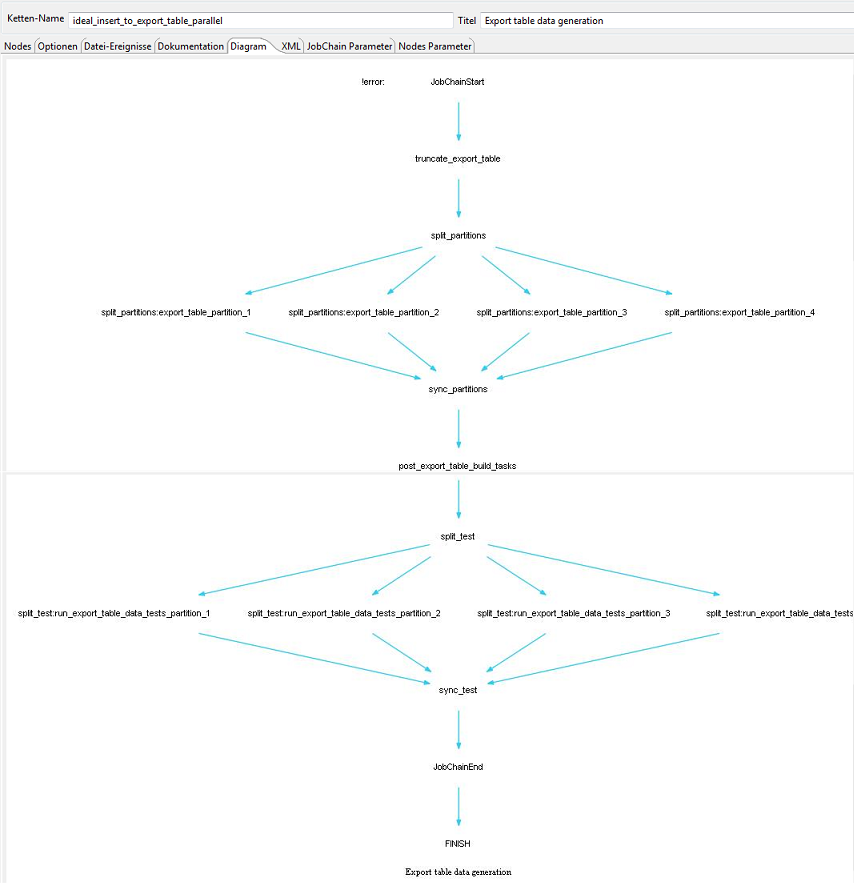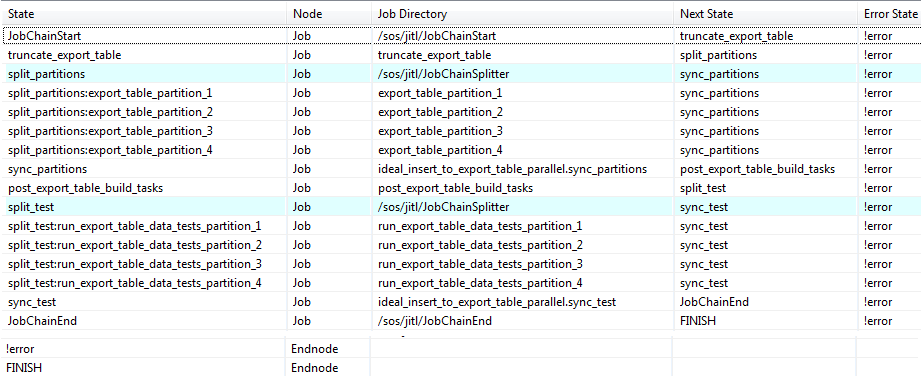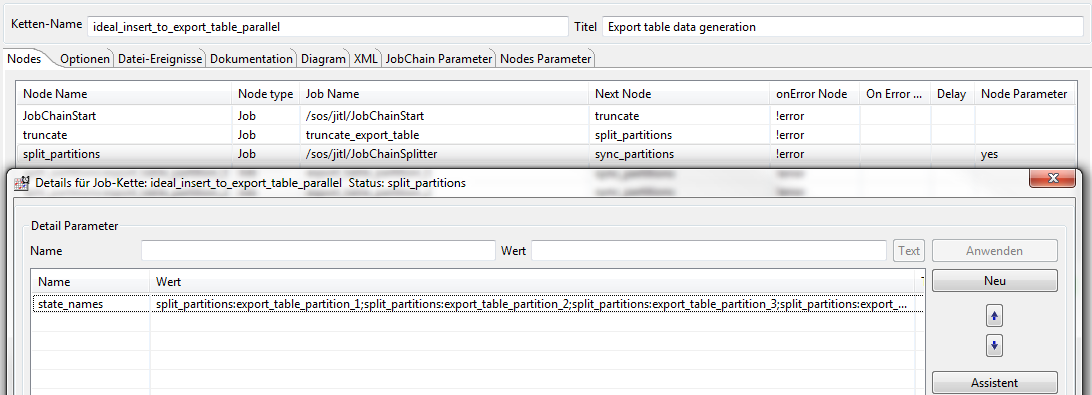Example: Multiple parallel processes in a job chain
Specification:
- The job chain is to start with a job named "truncate_export_table".
- After this job has been completed four jobs named "table partition" are to be run in parallel.
- A single job that indexes the new partition tables is then to run.
- Finally, a further four jobs that test the individual partition tables are to start in parallel.
This job chain is shown schematically in the diagram in the "Diamond" section below.
Writing the job chain
The following steps have to be followed to realize a job chain that meets the requirements listed above:
- A "splitter" job has to be included for each "series" of job nodes that are to be processed in parallel. The splitter generates an order for each series of parallel job nodes starts these orders as soon as it itself has been started.
- In order to do this the splitter job has to "know" the names of the states corresponding to the first node of each job node series. These names are specified in the splitter job's state_names parameter (see How to set and read job, order and node parameters).
- The parallel processing normally ends at a specific node in the the chain with processing then continuing serially. This node is the synchronisation node and is implemented using the Sync-Job.
The "Diamond" job chain structure
The example job chain will look like this (the diagram has been generated with the Sandbox JOE Version, which is planned to be released with JobScheduler version 1.7):
We refer to the pattern that results with this type of job chain as a "diamond" pattern. Such patterns can occur more than once in a job chain: both sequentially, as shown in the diagram above, in parallel and nested. They can also be combined with other job chain patterns such as emerald or cross-over patterns (see Example showing the synchronization of multiple job chains).
Job chain list view
The next illustration shows a list view of the job chain as produced by JOE:
The "Splitter" job
A generic splitter job is delivered with the JobScheduler JITL jobs. This job can be found in the "./live/sos/jitl" directory.
We recommend that the following syntax is used for the names of job nodes that are to be processed in parallel:
"node name of the splitter job" ":" "job name". For example split_partitions:export_table_partition_1 (see Best Practice - Parallel nodes).
Splitter job parameters
See documentation of the JobChainSplitter job.
The state_names parameter
- The splitter job state_names parameter is used to specify the node names of the jobs that are to be first started in parallel (see How to set and read job, order and node parameters).
- The node names are to be seperated by semi-colons.
- In jobs chains with this diamond pattern structure, the parameters are specified for the job chain and referred to as node parameters. Node parameters can be used to specify parameters for more than one splitter in a job chain, independently of one another, as in our example, without creating conflicts.
The parameters for the split_partitions splitter job - as shown in JOE - are:
The "Sync" job
A unique sync job is required at the end of every group of processes running in parallel (see Example showing how to run parallel jobs in a job chain) when the nodes in the job chain after the sync node are only to be processed after all the jobs (tasks) that are to be carried out in parallel have been completed without errors (see Best Practice - Give each sync job a unique name).
Each sync job has to be unique within a JobScheduler instance - and within a job chain - as long as a cross-over pattern has not been implemented (see Example showing the synchronization of multiple job chains).
For more information see the documentation for the JobSchedulerSynchronizeJobChains job.
see also
- Documentation of jobs JobSchedulerSynchronizeJobChains.
- Examples for the use of sync jobs see How to configure sequential execution of jobs in parallel.
- Best Practice.
Downloads
You can download the example described in this FAQ : insert_to_export_table_parallel.zip.


